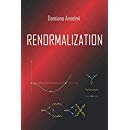We study some properties of the canonical transformations in classical mechanics and quantum field theory and give a number of practical formulas concerning their generating functions. First, we give a diagrammatic formula for the perturbative expansion of the composition law around the identity map. Then, we propose a standard way to express the generating function of a canonical transformation by means of a certain “componential” map, which obeys the Baker-Campbell-Hausdorff formula. We derive the diagrammatic interpretation of the componential map, work out its relation with the solution of the Hamilton-Jacobi equation and derive its time-ordered version. Finally, we generalize the results to the Batalin-Vilkovisky formalism, where the conjugate variables may have both bosonic and fermionic statistics, and describe applications to quantum field theory.
Eur. Phys. J. C 76 (2016) 49 | DOI: 10.1140/epjc/s10052-015-3874-y
The properties of quantum gravity are reviewed from the point of view of renormalization. Various attempts to overcome the problem of nonrenormalizability are presented, and the reasons why most of them fail for quantum gravity are discussed. Interesting possibilities come from relaxing the locality assumption, which can inspire the investigation of a largely unexplored sector of quantum field theory. Another possibility is to work with infinitely many independent couplings, and search for physical quantities that only depend on a finite subset of them. In this spirit, it is useful to organize the classical action of quantum gravity, determined by renormalization, in a convenient way. Taking advantage of perturbative local field redefinitions, we write the action as the sum of the Hilbert term, the cosmological term, a peculiar scalar that is important only in higher dimensions, plus invariants constructed with at least three Weyl tensors. We show that the FRLW configurations, and many other locally conformally flat metrics, are exact solutions of the field equations in arbitrary dimensions $d>3$. If the metric is expanded around such configurations the quadratic part of the action is free of higher-time derivatives. Other well-known metrics, such as those of black holes, are instead affected in nontrivial ways by the classical corrections of quantum origin.
Mod. Phys. Lett. A 30 (2015) 1540004 | DOI: 10.1142/S0217732315400040
We investigate the background field method with the Batalin-Vilkovisky formalism, to generalize known results, study parametric completeness and achieve a better understanding of several properties. In particular, we study renormalization and gauge dependence to all orders. Switching between the background field approach and the usual approach by means of canonical transformations, we prove parametric completeness without making use of cohomological theorems, namely show that if the starting classical action is sufficiently general all divergences can be subtracted by means of parameter redefinitions and canonical transformations. Our approach applies to renormalizable and non-renormalizable theories that are manifestly free of gauge anomalies and satisfy the following assumptions: the gauge algebra is irreducible and closes off shell, the gauge transformations are linear functions of the fields, and closure is field-independent. Yang-Mills theories and quantum gravity in arbitrary dimensions are included, as well as effective and higher-derivative versions of them, but several other theories, such as supergravity, are left out.
Phys. Rev. D 89 (2014) 045004 | DOI: 10.1103/PhysRevD.89.045004
Let $S(\Phi,U,K,K_{U})$ denote the solution of the master equation $(S,S)=0$, where $\{\Phi ^{A},U\}$ are the fields and $\{K_{A},K_{U}\}$ are the sources coupled to the $\Phi ^{A}$- and $U$-gauge transformations. If we replace $U$ with the solution $U^{*}(\Phi ,K,K_{U})$ of the $U$-field equations
\begin{equation}
\frac{\delta _{r}S}{\delta U}=0,
\end{equation}
then the action
\begin{equation}
S^{*}(\Phi ,K,K_{U})=S(\Phi ,U^{*}(\Phi ,K,K_{U}),K,K_{U})
\end{equation}
satisfies the master equation $(S^{*},S^{*})=0$ in the reduced set of fields and sources $\Phi,K$.

 Quantum Gravity
Quantum Gravity 


